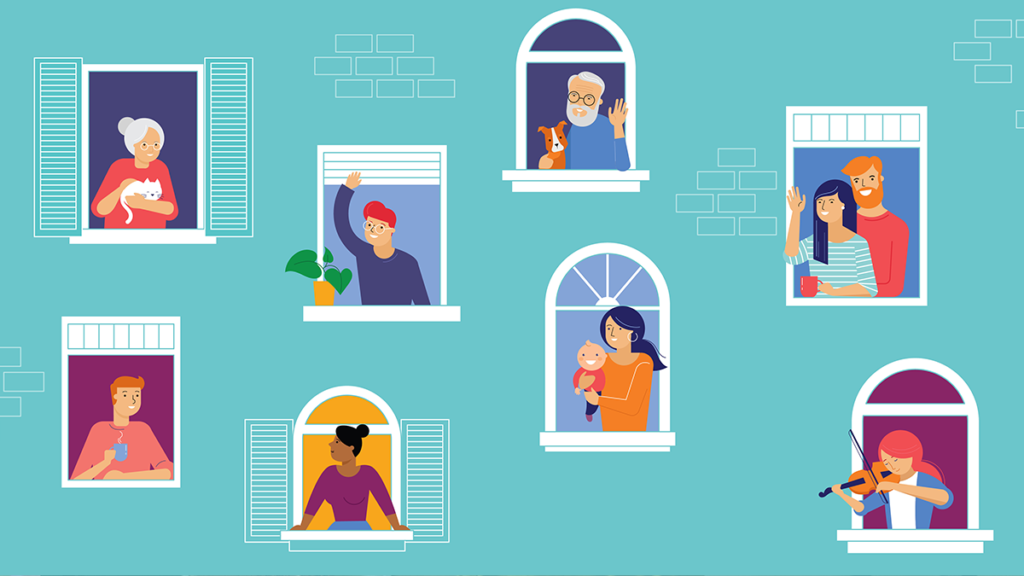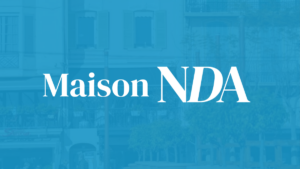Too few brands are leveraging the power of ‘local’ in their communications, particularly at a time when people feel more rooted to their homes and communities than ever.
That was the overriding theme of a round table hosted by New Digital Age in partnership with Nextdoor attended by senior media agency executives. They said that local often wasn’t a factor in client briefs and that most localisation activity centred around events such as bricks-and-mortar stores opening in particular localities.
Yet the global coronavirus pandemic had highlighted the need for people to have relevant, targeted information and commercial messages at both a macro (global) and micro (local) level.
Scott Curtis, Spark Foundry’s global head of digital and innovation; Americo Lenza, Centrica’s director of strategy and propositions; Sarah Baumann, VaynerMedia managing director; Marcos Angelides, Spark Foundry chief innovation officer; Daniel Chapman, Havas Media Group managing director of products and solutions; Steve Ray, Mindshare joint head of planning; Deborah King, Essence’s VP of media activation; Jed Hallam, Initiative chief strategy officer and Matthew Taylor, Head of Digital, OmniGOV, joined NDA editor Justin Pearse and Paps Shaikh, Nextdoor commercial director for the UK and EMEA in a wide-ranging discussion.
Angelides said some brands, such as McDonald’s and Google had brilliant examples of relevant local communications “but it’s still arguably the exception”. He continued: “There is a big opportunity, especially with what’s happening right now, to become more locally focused, especially in our strategic planning.”
He said that even before COVID there were considerations; that people in London behaved differently to other parts of the UK, and the differences between rural and urban communities. “That might seem like quite a tactical consideration but that has a massive impact on things like context and what media channels to use,” he added, citing that residents of Birmingham, Britain’s second biggest city were far more likely to drive to work than those in London.
For Ray, the biggest opportunity was when you connected people who had the same interests in the same community. He said the most powerful groups on Facebook were ‘dog walkers in Balham’ rather than just petrol heads. “Once you start to understand those communities and how to leverage those beyond the Facebook platform into out of home, for example, then you get a much stronger localised response.”
Shaikh concurred, saying that Nextdoor was for people to help neighbours out, particularly in their immediate locale, but that special interest groups could sustain a greater radius on the site. “It’s one of the real areas of growth that we saw as we came into Covid,” he said.
King suggested that Covid had helped changed the conversation with her clients and allowed her to “push them to be braver”. For much of her career, digital had been used to grow scale and seek mass. “I think it’s enabled them to think about things in a different way and it’s always been at the core of how I talk to my clients, it’s always this balance or short term goals and ambitions versus long term goals and ambitions,” she added. “I think local is really bringing that to the forefront because ultimately everyone is confined to their area.”
It was, said Hallam, a sense that the virus had “returned a sense of geography” after the internet had effectively “flattened” it. “But with it at the same time, we’re still dragging back bits of the technology that flattened it and there’s a really interesting change of narrative.”
He continued: “We’ve forever talked about a borderless world. And there’s a reality that actually people need people and people need a physical connection which under the lights of Nextdoor and Facebook groups has returned – which is really interesting because that changes things.”
Lenza agreed. He said that the sense of ‘local’ got dissolved in the wake of the internet and as globalisation became a reality. “People saw that it didn’t matter where they bought their services from, but this has all been brought into sharp focus again. People are now starting to see the value of [community] in their day-to-day lives and I’m already seeing the way they have transformed the way they buy or consume goods and services.”
Taylor concurred: “The coronavirus has made us navel gaze about how much more opportunity there is in that shared experience. We’re all planners in some regard – let’s understand what those shared experiences are at a local level and try and tap into that in some way shape or form.”
Curtis said his background was mostly in international roles but he had learnt that the best global campaigns were those that “acted” locally. “You have to have this common thread, you have to have the brand’s voice you have to have the consistency of communications to operate in every market across the world. But if you just do that, rather than have a conversation with them, from a bottom up approach… you can’t actually tap into what matters to people.”
Chapman outlined the tensions between local, regional, national and international priorities at a business level, pointing that markets are primed to driving profitability while global HQs were more concerned with efficiencies and commonalities. “You will always have different business objectives depending on the position or plan you’re putting together,” he cautioned.
Part of the problem on the communications front, suggested Baumann, was that ‘local’ had had a bad rap for years – in the pre-digital days it was not a priority for agency or marketing executives. “Does local have a legacy that needs a rebrand?” she asked. “Think back to pre-digital and local press campaigns – never the most exciting stuff, whereas now, through social and so on, there is so much that you can do.
“With sites such as Nextdoor you can really do good in a way you weren’t able to in channels before.”
With a renewed focus on context and with consumers needing timely information more than ever, location – and local – has perhaps never been more important for advertisers.








